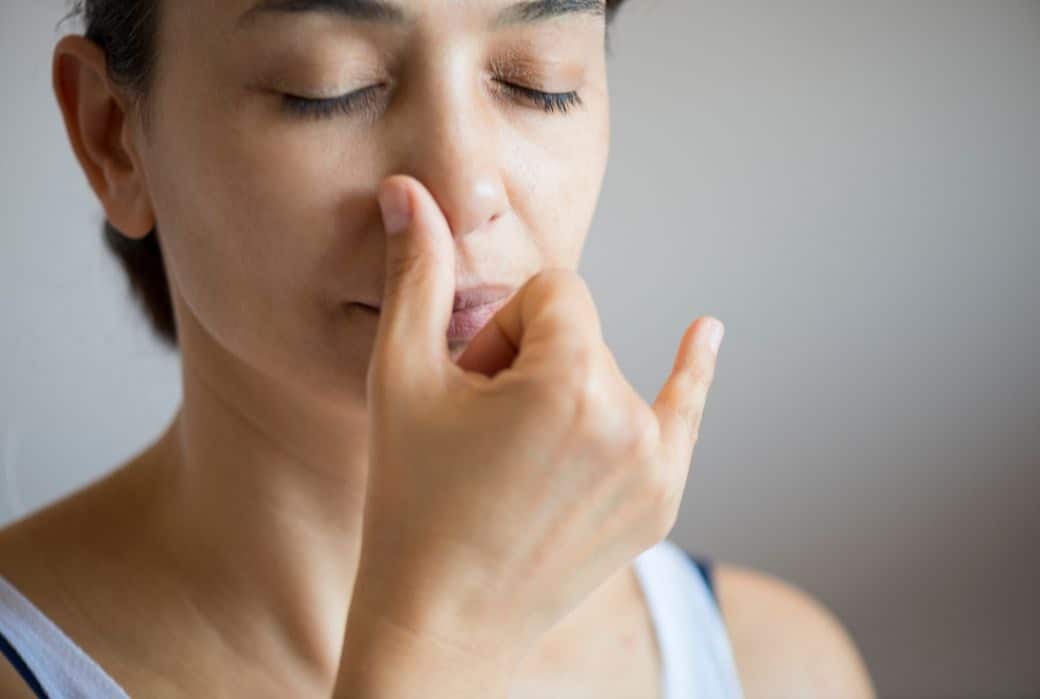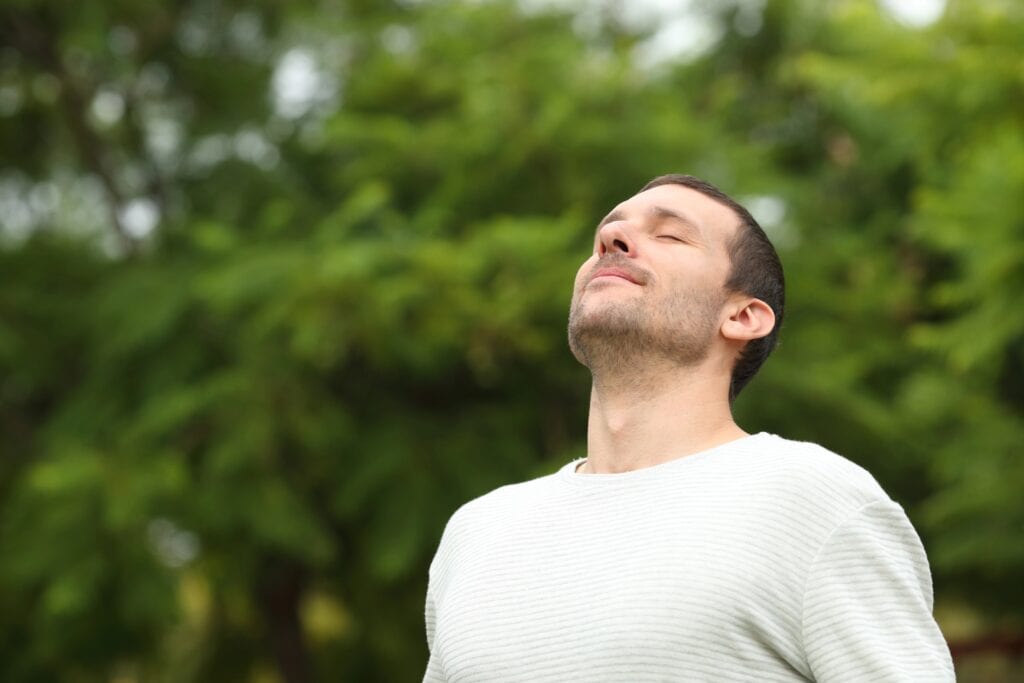Anxiety affects millions of people worldwide, impacting both mental and physical well-being. When stress and worry take over, the body responds with increased heart rate, muscle tension, and rapid, shallow breathing.
This natural reaction, known as the fight or flight response, can be beneficial in short bursts but becomes problematic when it persists.
Learning how to control your breath through breathing exercises can help counteract these effects, providing an accessible and effective way to manage anxiety symptoms.
By engaging in intentional breathing patterns, individuals can enhance heart rate variability, reduce blood pressure, and activate the vagus nerve, which promotes relaxation and balance in the nervous system.

Anxiety and Breathing: How They Are Connected
Anxiety can manifest in various physical symptoms, including shortness of breath, chest tightness, increased heart rate, and the activation of the fight or flight response.
These symptoms can feel overwhelming, making it difficult to regain control. Many individuals with anxiety disorders struggle to regulate their breathing patterns, leading to hyperventilation, dizziness, and panic attacks.
However, incorporating breathing exercises into daily routines can significantly reduce stress, activate the relaxation response, and promote a sense of calm.
Understanding Anxiety and Its Physiological Effects
According to the American Counseling Association, generalized anxiety disorder involves excessive and persistent worry lasting at least six months. These prolonged anxious states can lead to muscle tension, increased blood pressure, and imbalanced stress hormones, affecting the lungs, stomach, chest, and body as a whole.
Anxiety disorders often cause rapid, shallow breathing, which decreases carbon dioxide levels in the body, further exacerbating symptoms such as dizziness and lightheadedness.
While therapy approaches like cognitive behavioral therapy (CBT) are highly effective, breathing techniques provide an accessible and immediate tool to help manage anxiety symptoms.
Identifying Core Fears and Triggers
Anxiety often stems from underlying fears or triggers. Identifying these core fears can help in developing an effective management plan. Increased chest tightness and bodily tension can be a protective response, signaling the need for intervention.
By recognizing these triggers, individuals can implement breathing techniques to regain control over their breathing pattern and promote relaxation.
The Role of Controlled Breathing Techniques in Anxiety Management
Breathing exercises are a fundamental component of yoga, meditation, and stress management.
Deep breathing stimulates the vagus nerve, which activates the parasympathetic nervous system and reduces the physiological effects of anxiety.
Effective Breathing Techniques for Anxiety Relief
Breathing techniques can be a powerful tool for calming the nervous system and reducing anxiety symptoms. When practiced regularly, these exercises help restore control over the breathing rate, lower blood pressure, and ease muscle tension.
Each technique has unique positive effects on the body and mind, making it important to find the right method that works for you. Below are some of the most effective breathing exercises designed to alleviate anxiety and promote relaxation.
1. Diaphragmatic Breathing: Belly Breathing (Abdominal Breathing)
Also known as abdominal breathing, the diaphragmatic breathing technique encourages deep, slow breaths that expand the stomach rather than the chest.
How to practice belly breathing and abdominal breathing:
- Sit or lie down in a comfortable position with your legs slightly apart.
- Place one hand on your abdomen and the other on your chest.
- Breathe deeply through your nose, allowing your stomach to rise while keeping your chest still.
- Exhale slowly through your mouth, engaging your abdominal muscles.
- Repeat this for a few minutes to activate the relaxation response and lower blood pressure.
2. Pursed-Lip Breathing
This technique slows the breathing pattern, increases oxygen intake, and prevents hyperventilation.
How to practice pursed-lip breathing exercises:
- Inhale through your nose for about four seconds.
- Purse your lips as if you’re about to whistle.
- Exhale slowly through your pursed lips for six to eight seconds.
- Focus on controlling each breath to calm the nervous system.
3. Coherent Breathing
Coherent breathing involves maintaining a steady breathing pattern to enhance heart rate variability and reduce stress.
How to practice coherent breathing:
- Inhale slowly through your nose for a count of five.
- Exhale slowly through your mouth for a count of five.
- Maintain this breath control for several minutes, focusing on steady, rhythmic breathing.
4. Box Breathing
Box breathing is a structured technique used to regain focus and calm panic responses.
How to practice box breathing:
- Inhale through your nose for four seconds.
- Hold your breath for four seconds.
- Exhale through your mouth for four seconds.
- Hold your breath again for four seconds before repeating.
5. Alternate Nostril Breathing
Alternate nostril breathing is a yogic breathing technique that balances the nervous system and enhances relaxation by alternating airflow between the nostrils.
How to practice alternate nostril breathing:
- Sit comfortably with a straight back and relax your body.
- Place your right thumb over your right nostril and inhale deeply through your left nostril.
- Close your left nostril with your right ring finger, release your right nostril, and exhale through your right nostril.
- Inhale through your right nostril, then close it and exhale through your left nostril.
- Repeat this cycle for several minutes, focusing on smooth, slow breathing.

How Breathing and Exercise Reduce Anxiety
Exercise and Its Benefits for Anxiety Management
Regular exercise plays a crucial role in alleviating anxiety. Engaging in physical movement enhances blood circulation, balances stress hormones, and increases the production of endorphins—chemicals that boost mood and relaxation.
Best Exercises for Anxiety Relief:
- Yoga: Combines breathing exercises and movement to release tension.
- Aerobic Exercise: Activities such as walking, swimming, and running increase oxygen flow and stabilize the nervous system.
- Weightlifting: Strength training can improve muscle function and mental resilience.
Integrating Breathing with Movement
When incorporating breathing techniques into exercise, the body becomes more attuned to relaxation. For example:
- During yoga poses, exhale deeply to extend the stretch.
- When running, use rhythmic breathing to maintain endurance.
- While weightlifting, inhale on the exertion and exhale as you release tension.
Managing Anxiety Through Grounding Techniques
5-Sense Grounding Method
The 5-4-3-2-1 grounding technique is an effective strategy to bring awareness to the present moment.
- 5 things you can see
- 4 things you can touch
- 3 things you can hear
- 2 things you can smell
- 1 thing you can taste
By focusing on sensory input, the brain is redirected away from anxious thoughts and towards tangible, grounding stimuli.
Prioritizing Your Well-being
Anxiety can be overwhelming, but learning to control breathing, implement grounding exercises, and integrate exercise can create lasting improvements in mental health. Prioritizing yourself and taking moments to breathe deeply can shift your perspective and improve your overall well-being.
Key Takeaways:
- Slow, controlled breathing activates the vagus nerve, reducing stress and calming the body.
- Different breathing techniques help regulate carbon dioxide levels and improve relaxation.
- Exercise and mindful movement enhance breathing patterns and mental resilience.
- Grounding exercises can redirect thoughts and help manage panic moments.
By making these practices part of your daily routine, you can effectively manage anxiety and create a relaxed, healthier lifestyle.

Implementing Powerful Breathing Exercises To Overcome Anxiety
By integrating breathing exercises, such as belly breathing or abdominal breathing, into your daily routine, you can effectively manage anxiety, lower blood pressure, and enhance your overall health. Whether practicing diaphragmatic breathing, belly breathing, or yoga-based techniques, these methods provide long-term positive effects on emotional well-being.
When you feel stressed, taking a moment to focus on your breath can help reset your stress response and improve heart rate variability. Learning to harness the power of breathing techniques can be a transformative tool in overcoming tension, improving resilience, and maintaining a relaxed state of mind.
By making these practices a habit, you create a foundation for a healthier, more balanced lifestyle.
Seeking Help for Anxiety Disorders
If you or a loved one is struggling with an anxiety disorder, know that you are not alone. Professional support can make a significant difference in managing anxiety effectively. Whether you need therapy, a structured treatment program, or additional resources, we can help guide you toward the right path.
Don’t hesitate to reach out to a mental health professional who can provide the care and support needed for long-term well-being.

